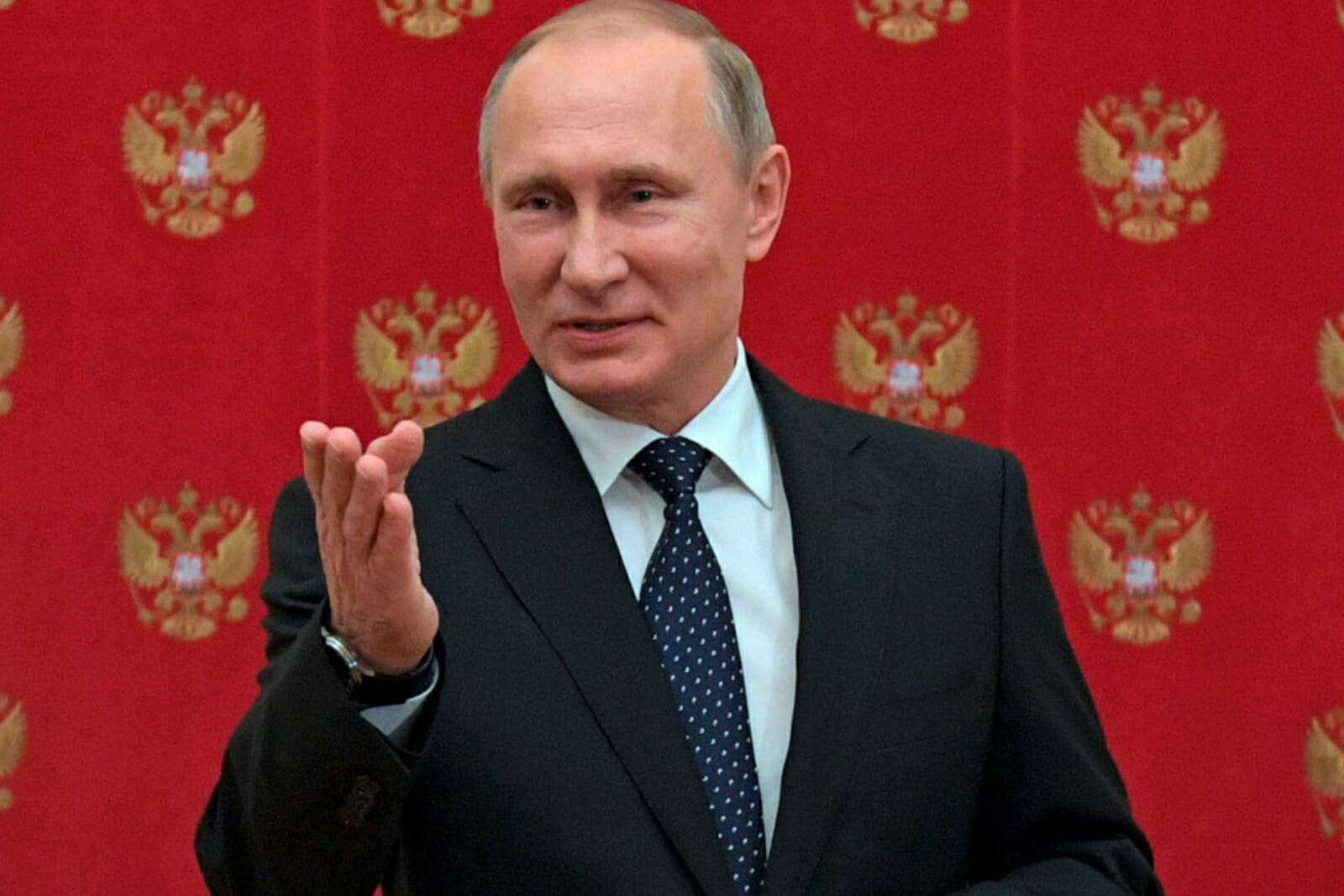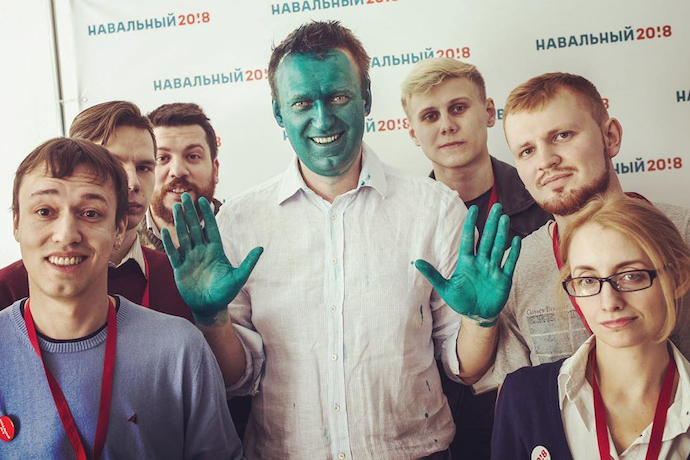
How the Soviet-Era Antiseptic ‘Zelyonka’ Became a Political Weapon in Russia and Ukraine
“This is Russia 2017 where instead of election debates, they just commonly spray some acid stuff in your face.” These words belong to Russia’s most famous opposition leader and the founder of the Anti-Corruption Foundation, Alexei Navalny, who recently survived two attacks with a Soviet-era antiseptic called “zelyonka.” Due to its increasing use in attacks against dissidents and political opponents, zelyonka became internationally infamous as a political weapon applied in Russia and Ukraine.
Zelyonka is a colloquial name literally meaning “green” in the Russian language. In other countries, it is known as “brilliant green” and is used mainly to dye silk and wool. In the Soviet Union, it was also widely used as an antiseptic. In post-Soviet countries, it is still very common to treat scrapes with zelyonka, as well as to cure inflamed wounds in children with chickenpox. Although zelyonka is generally safe, it might lead to chemical burns and even blindness in the case of its exposure to the eyes.
Zelyonka is extremely difficult to wash off the skin. The dye can stay for days and efforts to wash it off can result in its spreading to other areas. It is readily available in the market. Anyone can buy zelyonka over the counter in a pharmacy for less than a dollar. Its availability, cost effectiveness, and long lasting effects explain its popularity among pro-government activists attacking political opponents. It also has a symbolic meaning, which goes back to Stalin’s repressions against dissidents in the 1930-1950s.
In the Gulag, the Soviet forced-labor camp system, it was customary to use zelyonka to write the prisoners’ number on the hips of the deceased inmates. Initially, in prison slang, the expression “to smear someone’s leg with zelyonka” meant funeral procedures. Later, the Soviet criminal community slightly modified this expression replacing “leg” with “forehead” to refer to execution or death penalty. Russia’s contemporary criminals use the expression “to smear someone’s forehead with zelyonka” in a much broader sense to define any type of murder in general.
As a political weapon, zelyonka has been used in Russia and Ukraine for about a decade. One of its first victims became Maxim Reznik, a Russian politician and former chairman of the Saint Petersburg regional branch of the opposition party Yabloko. In March 2008, he was smeared with zelyonka during the opening of a conference of the new opposition movement “Solidarity.” Since that time, many critics of Putin’s regime and human rights activists fell victim to similar attacks. Their list includes the former member of the Russian Opposition Coordination Council Tatiana Lazareva, political blogger Ilya Varlamov, politician Mikhail Kasyanov, singers of the punk band Pussy Riot Nadezhda Tolokonnikova and Maria Alekhina, renowned writer Lyudmila Ulitskaya, journalist of the opposition newspaper Novaya Gazeta Elena Kostyuchenko, and member of the Glasnost Defense Foundation Galina Smirnova.
A similar trend can be observed in Ukraine, where this antiseptic is often used against protesters and opposition members. During the Euromaidan revolution, the Yanukovich regime hired special brigades of young pro-government activists to infiltrate demonstrators and incite violence from within the protest movement. In the Ukrainian language, they are named “titushki” after one of their leaders, Vadim Titushko, who personally assaulted two journalists. There is certain evidence that many titushki have a criminal background. Among other acts of violence, titushki performed several zelyonka attacks on journalists and anti-government demonstrators in the capital and other major cities.

Ukraine’s list of prominent zelyonka victims include the former Prime Minister Arseniy Yatsenyuk, Prosecutor General Yuriy Lutsenko, politician Serhiy Vlasenko, and current Interior Minister Arsen Avakov. Zelyonka attacks were conducted by both sides of the separatist conflict in Ukraine. For example, in 2014, Oleg Tsaryov, one of the separatist leaders in Eastern Ukraine was attacked with zelyonka. In 2016, zelyonka was sprayed on Ihor Miroshnychenko, Oleksandr Vilkul, and Natalia Korolevska, members of the Opposition Bloc. In 2017, four unknown assailants sprayed zelyonka on participants of the feminist march held in Kiev on the International Women’s Day.
In Russia, an alarming trend is the use of more harmful substances in attacks, including mixtures of zelyonka with other chemicals. This is what happened during the second attack on Navalny in April 2017. The first zelyonka attack on him was conducted during his visit of the city of Barnaul in Siberia on March 20, 2017. This was Navalny’s preliminary tour ahead of the 2018 presidential campaign where he hoped to run against Putin. On that day, Navalny tweeted that zelyonka did not cause any health damage but made him look like a movie character from Avatar, Mask, or Shrek.
It was the second attack one month later that was responsible for the loss of 80 percent of his sight in one eye. On April 27, an unknown assailant splashed zelyonka in his face right before the Global Events Forum in Moscow, where Navalny was supposed to speak as part of his election campaign. In the hospital, Navalny was diagnosed with a chemical eye burn. According to Navalny’s website, his doctor believes that zelyonka was “mixed with something else.” On April 28, another opposition activist, Natalya Fyodorova, was hospitalized after a similar attack that damaged her sight. In Fyodorova’s case, the liquid also appears to be much more dangerous than zelyonka. The seriousness of these incidents might indicate intentional attempts of assailants to blind prominent activists as a threat to other opposition members.
In his blog post published on April 30, 2017, Navalny wrote that he does not have any doubt that the attack was organized by the Presidential Administration: “It is clear that intelligence officials provide them [the attackers] with information about [my movements] based on their sources and external surveillance.
They also guarantee immunity, ‘broken security cameras,’ and the police unwillingness to investigate attacks.” In both cases, the police were initially reluctant to open criminal cases. As Navalny indicates, even after launching an official investigation, the Moscow police did not take any action to find and arrest the assailant and his accomplice, despite the fact that both of them appeared on the security camera’s footage. Moreover, the attackers’ faces were blurred out on the video that was shown on the Russian channel Ren-TV one day after the incident.
The use of zelyonka attacks as a political weapon, however, has its side effects. These acts of aggression attract attention to brutal methods that pro-government activists use to silence opposition members. They also encourage people to participate in collective action against state violence. In a video statement that Navalny released after the zelyonka attack, he announced that the more such incidents happen; the more people will participate in opposition rallies. This video went viral on the Internet. Navalny’s supporters immediately launched a flash mob posting their faces painted green on various social networks with the hashtag #GreenNavalny.
Green is now associated with the opposition movement. The journalist and political blogger Nikolai Danilov was arrested by the police on Red Square only for walking with his face covered in green paint. Supporting such actions, the current regime only provides additional impetus for citizens to take to the streets in solidarity with victims of the recent zelyonka attacks. As a result, more people are expected to participate in the opposition rally scheduled on June 12, which is officially celebrated as the Russia Day.

